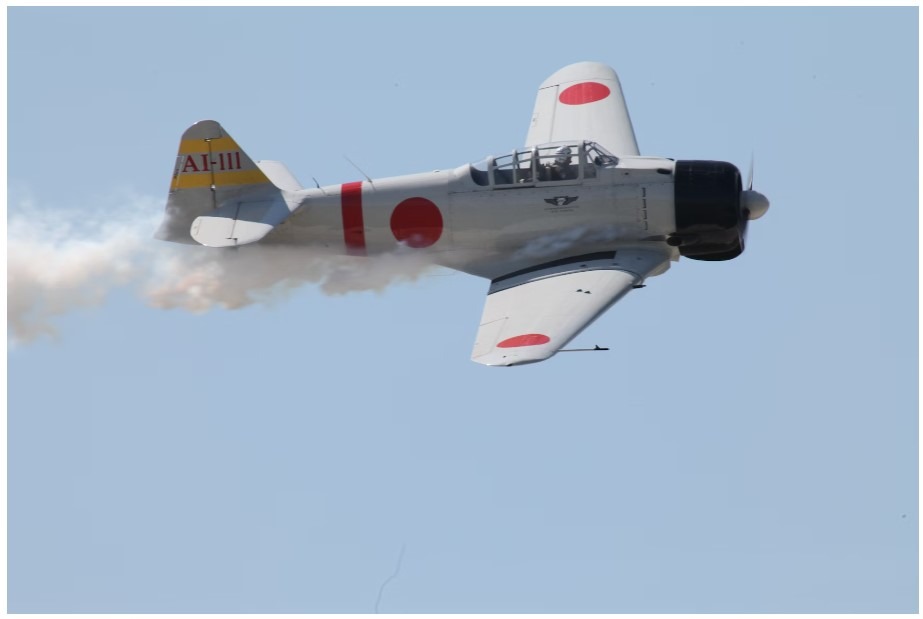The notorious and fearsome A6M Reisen is better known in the annals of history, and in the minds of the pilots who faced it, as the Zero.
The A6M was a fighter conceived, “specs-first” by the Japanese Navy in 1937. The plane they wanted was to be a carrier- based, highly maneuverable, long range fighter that was capable of defeating heavier land-based fighters toe-to-toe.
Only Jiro Horoshiki of the Mitsubishi company was able to produce a plane that fit the specifications required, and in 1939 the first prototype was created. The A6M was a very clean and aerodynamic airframe even with its bulky radial engine. Its retractable landing gear was set widely for easier landings on carriers at sea. It was also well armed for its fighter role with two machine guns and two cannons. The prototype A6Ms were found to have exemplary turning and climbing ability and so the A6M was put into production in 1940. 1940 happened to be the Japanese year 5700 and so it was known as the Type 0 and thus the name Reisen or Zero.
A test-squadron of 30 Zeroes was sent to China in summer of 1940. The Zero bested all of its competition with ease. Next, the A6M was at the forefront on December 7th, 1941 during the attack on Pearl Harbour. Over the next 6 months the Zero confounded American pilots with its superior maneuverability and its highly trained pilots causing heavy losses to the Americans. After the Battle of Midway however, the Zero had lost its lustre of untouchability. American pilots refused to face the Zero head on and instead made high speed passes at them using their superior engines and armour and banking on the Zero’s tendency to catch fire.
New Zeroes were introduced with better armour and equipment but this added weight meant less of that famous aerobatic maneuverability. By 1945 many A6Ms were converted to kamikazes.
A total of 10,964 Zeroes were built.
| Type | Fighter |
| Power Plant | 1 x 1,130-horsepower Nakajima NK1F radial engine |
| Max speed: | 565 km/h ( 351 mph) |
| Ceiling: | 11,050 m (36,255 ft.) |
| Range: | 1,920 km (1,193 mi.) |
| Weight (empty): | 1,876 kg (4,136 lb.) |
| Weight (loaded): | 2,952 kg (6,508 lb.) |
| Wingspan: | 11 m ( 36 ft. 1 in.) |
| Length: | 9.12 m ( 29 ft. 11 in.) |
| Height: | 3.51 m ( 11ft. 6 in.) |
| Armament: | 2 x 7.7mm machine guns; 2 x 20mm cannon |
| Service | 1940-1945 |
